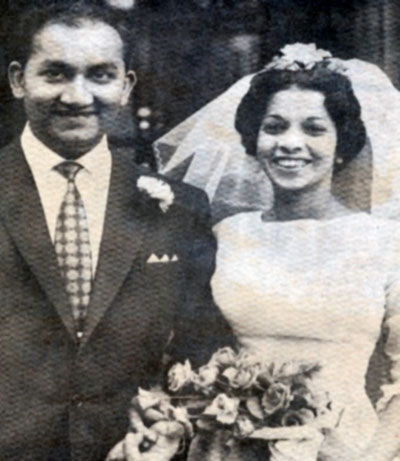Trinidadian Painter, Writer and ‘Poet of the Plains’

Born in the eastern region of Upper Guaico near the town of Sangre Grande in 1932 in colonial Trinidad, Boodhoo was the son of an estate labourer. Though of East Indian descent, the product of indentureship from South and East Asia to the colony after the abolition of slavery, he noted his name said something about ‘the whole history of colonialism. You have a Judaeo-Christian first name onto a British middle name, with a Hindu surname.’ But the cosmopolitan diversity was stimulating. As he remembered, ‘most of the children in the Roman Catholic school and in my village were of African origin. My best friends were of African origin, so going to fete and carnival and playing steelband was part of my growing up. The Hindu element was also very strong, as well as the Presbyterian, because I went to church every Sunday. That kind of mixture has enriched my life.’
At Naparima Training College in the 1950s, he was taught by the Trinidadian Muslim artist Mahmoud Pharouk Alladin (1919-1980), whose impressionist style of painting and themes of Trinidad folk culture influenced the young Boodhoo at a time of rising nationalism against British colonial domination. Alladin had been awarded a scholarship from the British Council to Birmingham College of Arts and Crafts, and then was employed as an Art Officer by the Ministry of Education and Culture during the period 1953-1956. He was responsible for overseeing Art Education work in all schools and teachers’ training colleges in Trinidad and Tobago, and had himself visited Brighton College of Art in 1953 (Brighton and Hove Herald, July 18th, 1953).
Boodhoo received a governmental scholarship in 1958 which allowed him to study art at Brighton College of Art; where he studied disciplined, formal techniques, and he earned a national diploma in design. As Bruce Paddington noted in Caribbean Beat (no. 6, 1993), ‘At the Brighton College of Art in England, Boodhoo learned the tools of his trade. His work was mainly representational and was frowned upon by his colleagues when he returned to Trinidad to teach: they expected him to embrace some new style. Gradually he moved towards abstraction and semi-abstraction.’ The Argus on 21 July 1962 noted Boodhoo had married Halima Khan, from British Guiana, a nurse at Sussex Throat and Ear Hospital and who had worked at Brighton General Hospital and Cuckfield Hospital, at Brighton Registry Office.
On 31 August 1962, Trinidad and Tobago became independent and Boodhoo returned home to teach. Studying abroad in Central Washington University and Indiana University in the 1960s and 1970s saw Boodhoo develop into one of the Caribbean’s leading art educationalists, an important oil painter with a political bent, and a novelist, author of Between Two Seasons (1994). In 2018, the Isaiah James Boodhoo Art Gallery opened at the Indian Caribbean Museum of Trinidad and Tobago in Carapichaima, opened by Halima Boodhoo, in tribute to his work, not least his art relating to life on Trinidad’s Caroni plains.
